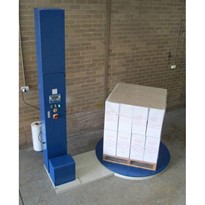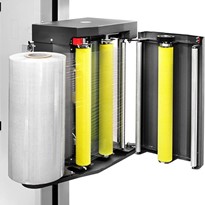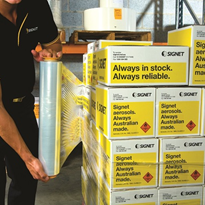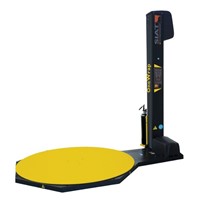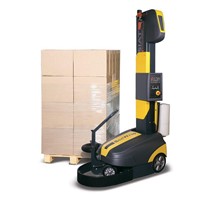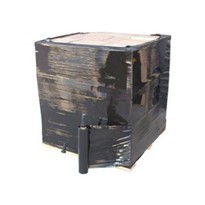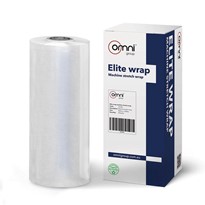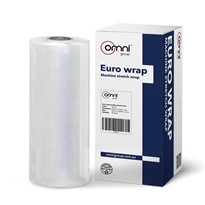Pallet wrapping is an essential process in many industries such as manufacturing, warehousing, and logistics. It is crucial to ensure the safe transportation and storage of goods. However, the traditional pallet wrapping process is labour-intensive, time-consuming, and can lead to inconsistencies in wrapping quality. With the advent of automation, businesses can now maximise efficiency and minimise errors with pallet wrap automation.
At FROMM Packaging we understand that pallet wrap automation is important as it helps businesses improve efficiency, reduce costs, and ensure product safety during transportation. We offer a wide range of automated pallet wrapping machines tailored to meet the unique needs of different businesses.
There are many benefits to pallet wrap automation, some of which include:
1. Improved Efficiency
Automating pallet wrapping eliminates the need for manual labour, which reduces the time required to wrap a pallet. It also ensures that the wrapping process is consistent, minimising the risk of errors and reducing the amount of stretch film used. This results in increased productivity, reduced costs, and improved overall efficiency.
2. Reduced Costs
Automating pallet wrapping reduces the amount of stretch film used, which translates to cost savings. It also reduces labour costs since the need for manual labour is eliminated. Additionally, automated machines require minimal maintenance, reducing maintenance costs in the long run.
3. Increased Safety
Manual pallet wrapping can be hazardous to workers, especially when handling heavy loads. Automated machines eliminate the need for manual labour, reducing the risk of workplace injuries. They also ensure that the wrapping is done correctly, minimising the risk of load shifts during transportation.
4. Customisation
Automated machines can be customised to meet specific requirements, such as load size, weight, and wrapping pattern. This ensures that the wrapping process is tailored to the unique needs of the business, resulting in better load stability and reduced product damage.
5. Improved Sustainability
Automated machines use less stretch film compared to manual wrapping, which reduces plastic waste. They also ensure that the wrapping is done correctly, minimising product damage during transportation, which reduces the need for replacement and minimises waste.
When implementing pallet wrap automation, it is essential to consider the following factors:
1. Load Size and Weight
Different machines are designed to handle different load sizes and weights. It is crucial to choose a machine that can handle the loads that the business typically handles.
2. Wrapping Pattern
Automated machines can wrap pallets in different patterns, such as spiral or cross wrapping. The wrapping pattern chosen should be based on the specific requirements of the business.
3. Integration with Existing Production Line
Automated machines should be integrated into existing production lines seamlessly. It is essential to choose a machine that can be easily integrated with existing equipment and software.
4. Maintenance and Service
Automated machines require regular maintenance to ensure optimal performance. It is essential to choose a machine that is easy to maintain, and spare parts are readily available. Service agreements with the manufacturer should also be considered to ensure that the machine is serviced regularly, and any issues are resolved promptly.
At FROMM Packaging, we have gained a reputation for providing quality packaging to Australian businesses for years. We provide a wide range of packaging solutions, such as stretch wrapping machines, pallet wrap, and packaging straps, to name just a few. For more information, click here or call 1800 940 356.


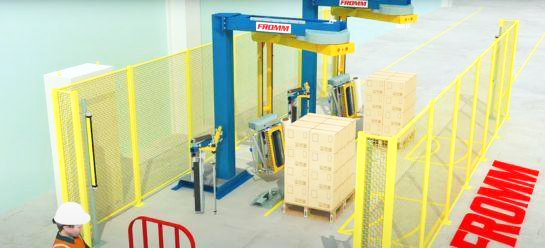





-160x160-state_article-rel-cat.png)


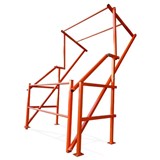
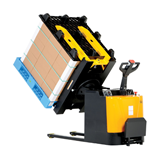
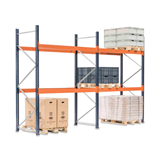
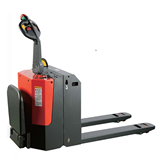


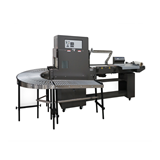

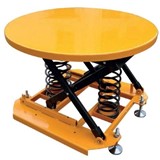
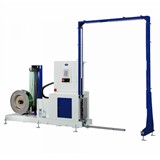
-205x205.jpg)
-205x205.jpg)
-205x205.jpg)
-205x205.jpg)
-205x205.jpg)
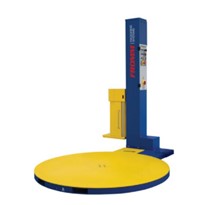
-205x205.jpg)
-205x205.jpg)
